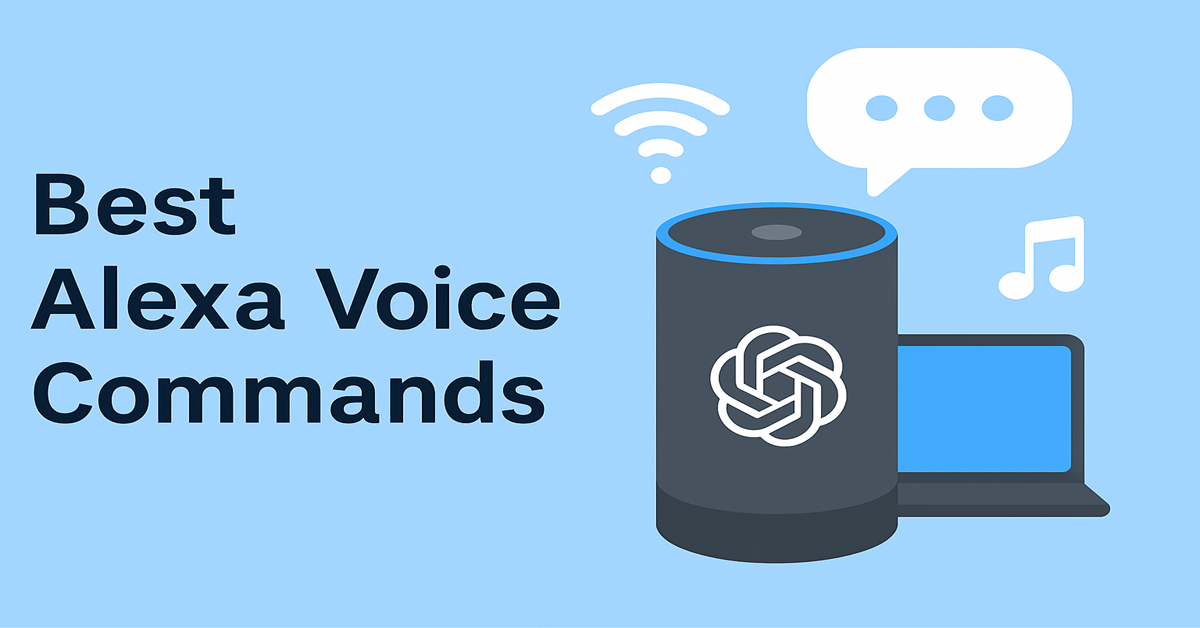Introduction
For people who are blind or visually impaired, Alexa is more than a smart speaker—it’s a hands-free assistant for managing everyday tasks. From setting reminders to controlling lights and identifying objects, Alexa can provide independence and convenience through simple voice commands. In this 2025 guide, we’ve curated 17 of the most useful and updated Alexa commands, including new features available on Echo Show devices.
The first time I used Alexa, I asked her the time while I was half asleep. No screen. No buttons. It was the first time I realized how helpful a voice assistant could really be.
Core Everyday Commands
• Alexa, what time is it? — Essential for checking the time without a screen.
• Alexa, what’s on my calendar today? — Helps manage your schedule hands-free.
• Alexa, add [item] to my shopping list. — Quickly note items to buy using voice.
• Alexa, remind me to take medicine at 8 PM. — Perfect for time-sensitive reminders.
• Before I started using reminders, I’d often miss my evening medication. Now, Alexa gently reminds me at 8 PM every night. It’s like having a reliable friend who never forgets.
• Alexa, turn off the lights. — Controls smart home devices effortlessly.
• Alexa, call [Contact Name]. — Voice-enabled calling for easy communication.
• Alexa, what’s the weather today? — Stay informed about daily weather conditions.
• Alexa, play the news / podcast / music. — Hands-free access to audio content.
• Alexa, open Seeing AI / My Eyes. — Launch apps that assist with object and scene descriptions.
• I once dropped a can while cooking and couldn’t tell if it was tomatoes or chickpeas. I asked Alexa to open Seeing AI, held it up, and within seconds I had my answer. It saved dinner that night.
• Alexa, read my to-do list. — Keeps you organized throughout the day.
Control & Notifications
• Alexa, what are my notifications? — Access messages and alerts without touching a device.
• Alexa, what’s my location? — Useful when using Echo Auto or routines to get location-based updates.
• Alexa, start my morning routine. — Automate tasks like lights, news, and reminders with one command.
• Alexa, help / Alexa, what can you do? — Discover Alexa’s available features with guided suggestions.
Echo Show–Specific Accessibility Commands
• Alexa, what am I holding? — Use Show & Tell to identify household objects using the Echo Show camera.
• I had two spice jars with no labels. I held one up and asked, ‘Alexa, what am I holding?’ She replied: ‘Cinnamon.’ It was a small thing, but it gave me real confidence in the kitchen.
• Alexa, turn on VoiceView. — Activates the built-in screen reader for Echo Show devices.
• Alexa, turn on screen magnifier. — Zooms in on Echo Show screen content for easier visibility.
Conclusion
These 17 Alexa voice commands provide practical and powerful tools for blind and visually impaired users. Whether managing your day, controlling your environment, or exploring new accessibility features, Alexa can support a more independent and convenient lifestyle. Explore these commands on your Echo or Echo Show device to get the most out of your smart assistant in 2025.
At first, I thought Alexa was just a fancy speaker. But after using it for a few weeks, I realized it could do so much more. It’s become a quiet, helpful part of my day—always there, always listening.
FAQs
- Can Alexa be used by blind people?
Yes. Alexa is designed to be voice-controlled, which makes it highly accessible for blind and visually impaired users. Features like reminders, smart home control, and accessibility skills help users manage daily tasks without needing a screen.
Which Alexa commands are best for visually impaired users?
Commands that provide hands-free access to time, weather, reminders, smart lights, and calendar updates are the most useful. Echo Show features like Show & Tell and VoiceView also enhance accessibility.
Does the Echo Show work for blind users?
Yes. Echo Show includes features like VoiceView (a screen reader), screen magnifier, and Show & Tell for object recognition, which make it very helpful for blind or low-vision users.

